So I made it to Peru.
If you have been following some of the previous posts, you will know the political upheavals and protests in that country were causing problems for locals and travellers alike. Especially in the south of Peru – in places such as Puno, Arequipa and Cusco – roadblocks and (occasionally violent) protests against the central government in Lima had greatly disrupted normal life.
The roadblocks prevented the normal flow of people and goods, meaning shortages of things such as fuel and food in areas that are already struggling compared with more affluent regions in the north and west of Peru. In Puno region, protestors damaged several government buildings including customs and migration offices at the Desaguadero and Kasani border crossings with Bolivia, while roadblocks cut off the flow at the crossings themselves. Hundreds of trucks were backed up for weeks on the Bolivia side, crimping a trade flow which is absolutely crucial for that landlocked nation.
Machu Picchu – Peru’s most famous tourist destination – was shut down for several weeks in January and into February, starving an already impoverished area of much-needed revenue. Cusco was a hotbed of protests so it was an understandable measure by the government, especially given a few hundred tourists had been stranded earlier – but it only contributed to the anger that locals in that region feel towards the politicians in Lima.
Searching for a way into Peru, or around it, presented a few options. There was the long way around via river boats through Brazil into Iquitos and then potentially Ecuador. I also looked at flying the bike from Santa Cruz in Bolivia to Colombia or even Panama, which would have dealt with the Darien Gap issue but meant missing Ecuador and Colombia – not desirable.
In the end, Facebook provided a solution. I had posted on the Horizons Unlimited FB group when I collected the bike in Valparaiso, basically shooting out to any fellow travellers about my trip. A fellow Aussie named Jamie was one who had commented on the post, mentioning he was in Bolivia and heading north to Colombia.
I remembered the comment and reached out to Jamie again while I was in Santa Cruz, asking about his plans for Peru. As luck would have it, he was linked up with a Dutch couple – Nynke and Lukas – in a 4WD; two French guys – Baudoin and Paul – on Honda Transalps; and a German bloke – Frank – on a KTM 500 EXC..
They were all heading to Peru and invited me to join the convoy, so I made tracks to link up with them in La Paz, a couple of days’ ride from Santa Cruz.
I really shouldn’t have washed the bike in Santa Cruz. The very next day towards Villa Tunari took me into the mountains with rain, fog and long stretches of muddy, under-construction roads. It was a long day of dodging potholes and trucks, and slicing through rocky and slop-filled detours around construction zones and landslides. Great fun though, with some excellent scenery. The bike was filthier than it had been before I had it washed, but I rolled into Villa Tunari with a smile.
The town itself is interesting. Sited on a river, it seems to be a bit of weekend destination for people from Cochabamba and thereabouts. Loads of restaurants line the roadside, with a few bars and tiendas selling everything from beer to inflatable pool toys and beach towels.

I checked into a hotel for $20 a night. Nothing flashy, but it had air-con (it was plenty hot and humid) and a pool, although the cloudy green water didn’t tempt me in for a dip. Didn’t stop the Bolivians, though – they were happily wallowing with beers and blaring reggaeton.
After an excellent dinner at a roadside jiba (meat kebabs cooked over coals) stand, it started pouring with rain as I was finishing up, so I hailed one of the plentiful tuk-tuk taxis to whizz me the 500m back to the hotel.

There were a few families at the hotel and a lot of couples. I realised why later, when I was flicking idly through the TV channels. There were at least four channels of hard-core porn available, possibly help inspire the romantic notions of these guest couples.
Many South Americans share a home with their extended families – mums, dads, in-laws, etc. This wouldn’t leave much privacy for intimate moments, so many hotels cater for couples seeking some space in which to get loved up. In some places these establishments are called ‘love hotel’. In others, such as Chile, they called them ‘motels’ – which can be somewhat confusing for visitors from Australia, where motel means something completely different. Often the rooms can be rented by the hour.
My digs in Villa Tunari weren’t so blatantly advertised, but maybe they are little more discreet about these things in Bolivia…
From Villa Tunari to Cochabamba is about 160km, but brings a stark change in landscape, from Tunari’s green, semi-tropical backdrop to the rockier, bleaker, more Andean setting of Cochabamba. It is a decent-sized city and the run into town seemed to take ages. I only stayed the one night on the way to La Paz, but it is a pretty enough place in the centre with some attractive plazas, old buildings and parks.
One major hassle in Bolivia, as a foreigner, is buying fuel. They have one price for locals and a much higher price for extranjeros. Service stations are also supposed to take a record of your vehicle rego and ID when buying.
Many servos can’t be bothered and will straight up refuse to sell fuel to foreign riders. Others won’t fill your bike directly, but if you park it a discreet distance away, they will fill a jerry can or plastic bottle (any plastic bottle…) which can then be transferred to the bike. Still others don’t care and will happily sell you fuel at a rate somewhere between the local and extranjero price, no doubt pocketing the difference.
So far I had had no issues getting fuel in Bolivia, but Cochabamba was my undoing. Three servos on the way out of town point blank refused to do business. The fourth, well outside the city limits, was more helpful, topping off the Yamaha for 5 bolivianos a litre – about halfway between the two official prices.
On the plus side, motos don’t pay tolls in many South American countries, including Bolivia, so I could gleefully ride past the numerous toll booths on the highways. You win some…
I thought about doing the run from Cochabamba to La Paz in two legs, but made such good time that I carried on to the capital, arriving late afternoon.
La Paz is situated in a valley in the altiplano, with the city growing up and over the valley sides from the centre. Coming in, as I did, from the south, you enter the outskirts (which go for a long way) before the valley suddenly appears and you plunge down incredibly steep and narrow streets into the city centre.
Off to the north-east, huge peaks topped with snow are clearly visible, standing guard and reminding you that La Paz is one of the highest capitals in the world.
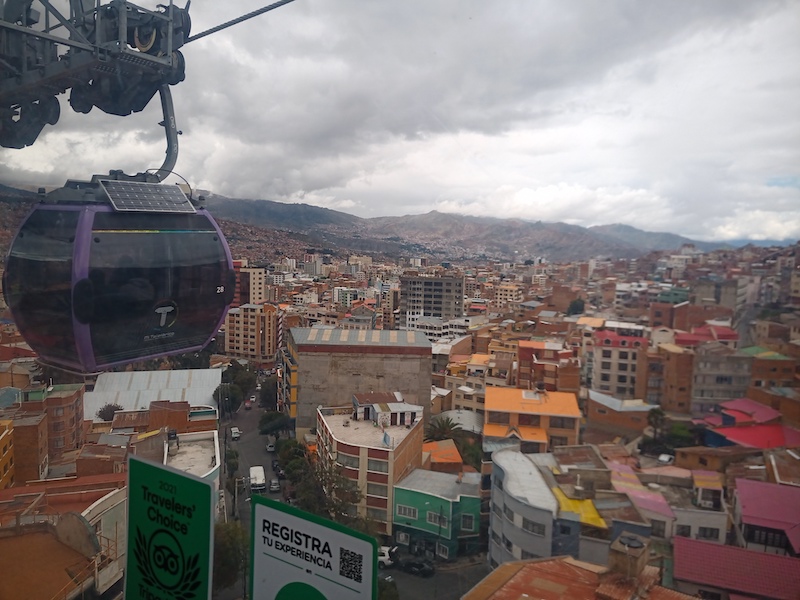

With my early arrival, I checked into a cheap and forgettable hotel for the night before heading to the Wake Up Hostel next day to meet up with Jamie and the others.
The cheap hotel advertised free parking. That bit was true. What they neglected to mention was that it was up a couple of steps, through the front door, down a short, dog-leg corridor and through another door.
I removed the panniers and managed to ride it up the steps and past the front door, but needed help from one of the managers and another bloke to get it up a final step, down the dog-leg corridor and through the narrower second doorway before it reached its final resting place. With that obstacle course, the bike was definitely safe and secure.
The practice on arrival, and the fact it only had to go down the steps on the way out, made the task of exiting easier the next morning and I was able to do it unaided.
Wake Up Hostel was only 500m away, so I was there a bit early. They let me leave my stuff until the room was ready, so I deposited the bike in a parking station around the corner and set off to wander around town for a few hours.
Like Potosi, La Paz is a challenge to navigate on foot due to the steep streets and altitude. I took things slowly and had a decent poke around to orient myself, later finding a nice place near the hostel for coffee. There I met up with Jamie, and later back at the hostel, the other members of the group.
They are a good bunch – all friendly and instantly welcoming, which was beaut as we were to travel together for the next few weeks.
I stayed in La Paz for three nights and can’t say I was overly enamoured with the place. Basically, it’s just a bit grim.
On this trip I have generally tried to stay out of big cities, unless there is a very good reason otherwise. They aren’t much fun on a motorcycle and I prefer the quieter surrounds of the countryside and smaller towns and villages.
La Paz has some good museums and a few nice historic buildings, but it is dirty, crowded and generally not terribly attractive. Not sad I went there, but I wasn’t unhappy to leave.
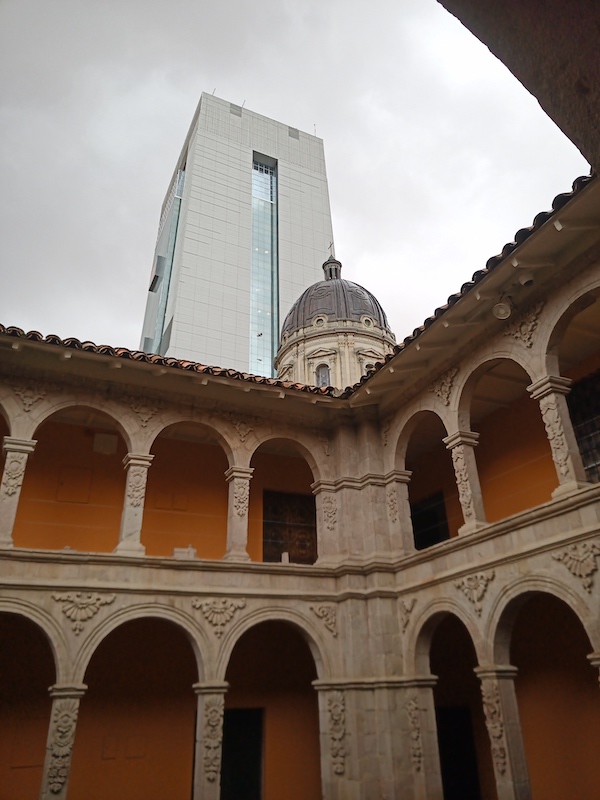

I was also quite happy to vacate the Wake Up Hostel. Bunking down in a shared dorm room full of complete strangers is not my idea of comfortable accommodation, and I much prefer to camp or pay a bit extra for my own room and bathroom.
One highlight was the lunch we enjoyed at the fittingly named Popular restaurant. Only open for lunch, there was a queue outside the restaurant’s door and down the stairs when we arrived 10 minutes before go time.
It was definitely worth it. Three courses of modern Bolivian cuisine plus juice for $16 is hard to beat, especially when it tasted so good.
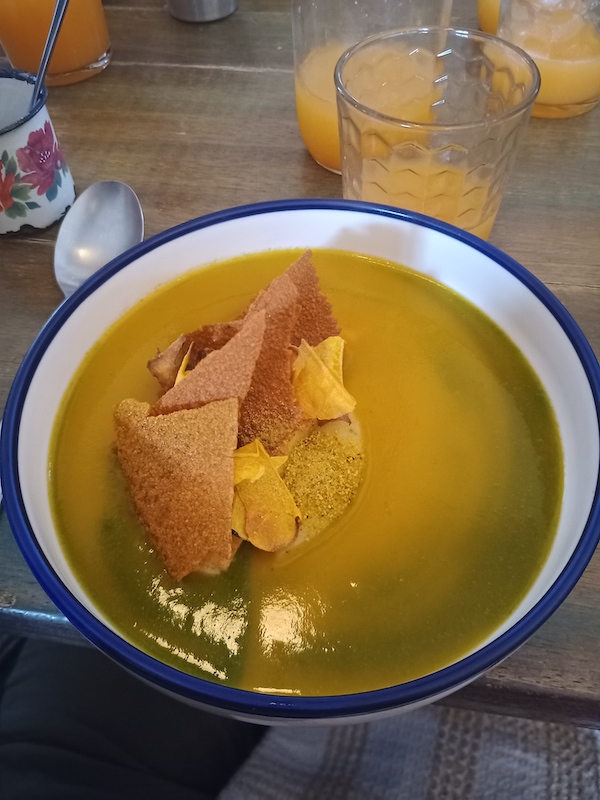
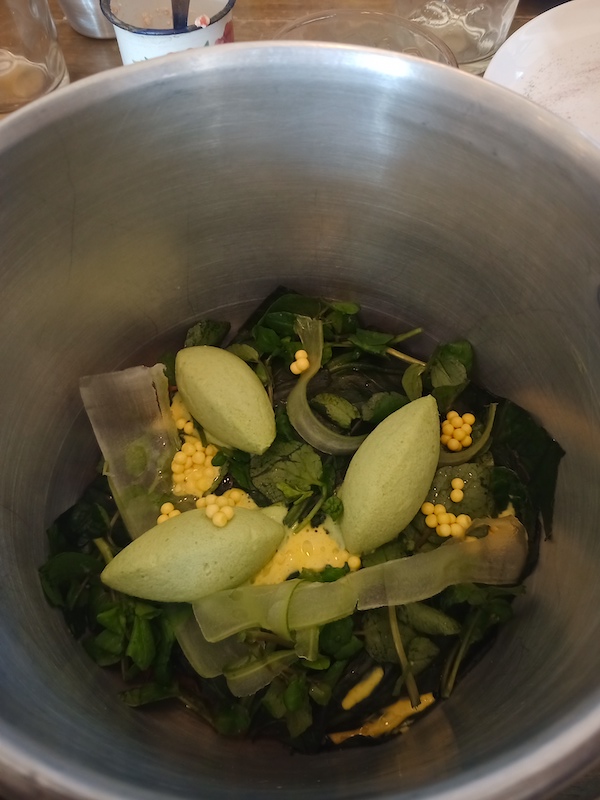
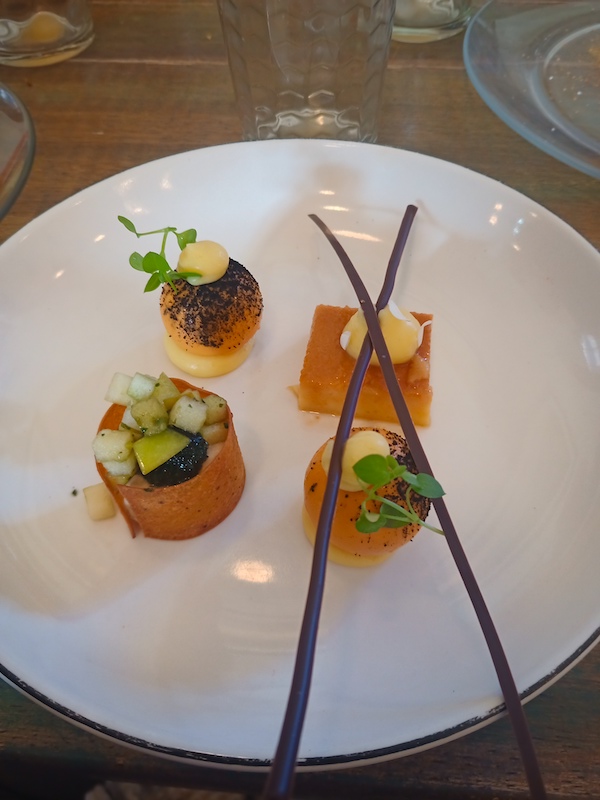
Next day, Jamie and I headed for Lake Titicaca and the town of Copacabana. I was glad to be out of the city and on the open road once more.
It was interesting riding with another after so long solo and I had to exercise my patience. Not that Jamie was annoying to ride with, but when you are accustomed to going and stopping when you want, factoring in another person is a whole different scenario.
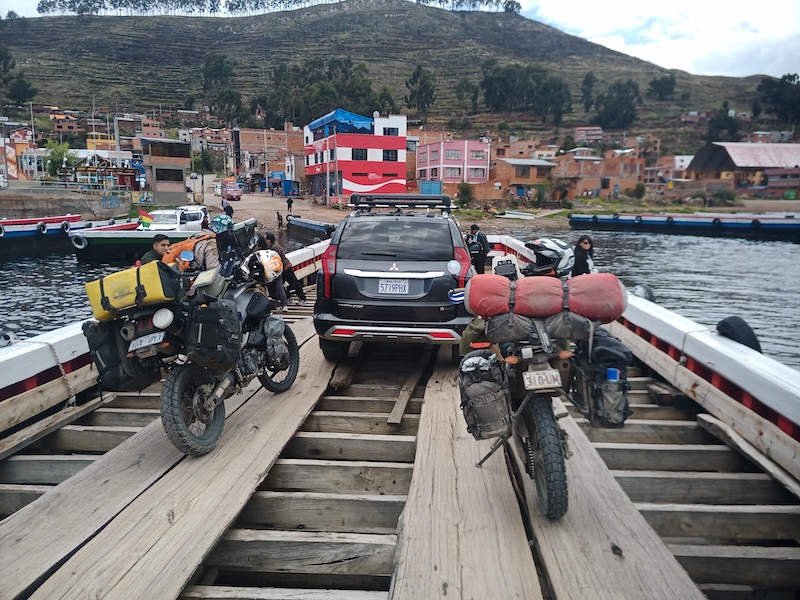
We arrived in Copacabana mid-afternoon, and as we sat in the main plaza eating a delicious $5 ceviche, the air was suddenly rent by explosions. They were fireworks and preceded a strange parade of locals, different groups of women and men walking together in coordinated outfits. In each group, the women wore matching coloured skirts, blazers and the ubiquitous bowler-style hats so favoured by ladies in the Andes. The men in the various groups had suits and ties in the same hue as their female counterparts.
Almost everyone was drinking beer. Most of the men and more than a few of the women were carrying longnecks, and were clearly well sozzled. It was 2pm.
After getting our accommodation sorted – a nice little hotel on a hill over looking the lake – we wandered back into town to find the festivities had ramped up.
Around another plaza closer to the waterfront, three separate stages had been set up. On each stage, bands of musicians and singers – mostly men and in matching outfits – were belting out tunes at great volume. It was like some sort of simultaneous battle of the bands.
In front of each stage, laughing, dancing, gossiping, crying on each other’s shoulder, but consistently drinking, the different groups from the earlier parade were getting their party on.
Along the sides, people sold bottled beer from crates to the revellers. Men in catering company uniforms handed out polystyrene containers of food.
We never found out the reason for the event – weddings, festival, anything? But the participants were well into it and welcoming of our presence as we strolled from one stage to another. We bought some beers. I danced with a couple older ladies determined to show me the right moves. A guy handed us whiskey shots each time he saw us, demanding we down it in single gulp and roaring with approval when we did so.
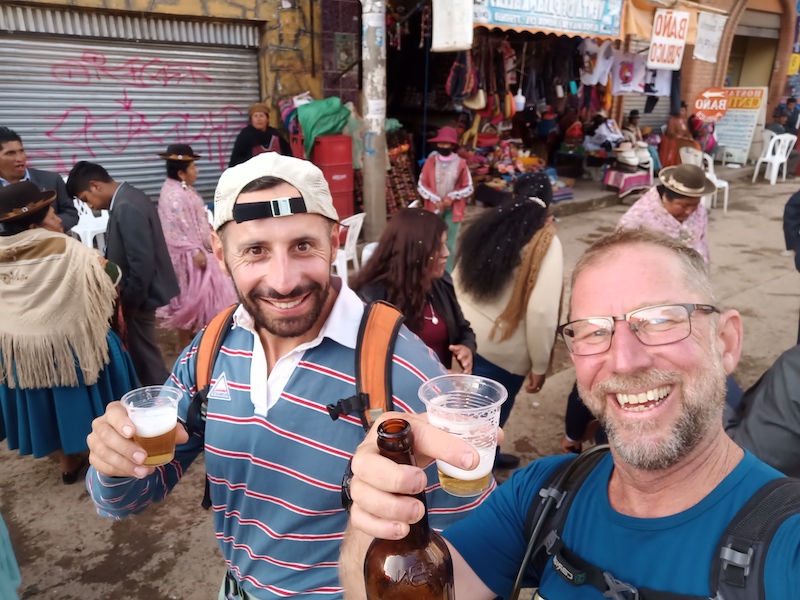
It was crazy, wild and somewhat weird seeing these normally reserved and stoic Bolivians hitting the piss like Australians at a B&S ball, but also refreshing at the same time.
Everyone needs to let their hair down from time to time. Watching drunk guys slap each other on the back and hug, saying the Spanish or Aymara equivalent of “I looove you, mate”, and women comforting a friend distraught by some boyfriend or husband’s lack of something, all with emotions charged by copious amounts of beer, was a humorous reminder of how similar we humans are, despite the surface differences.
Next day we took a boat out to Lake Titicaca, visiting Isla del Luna and Isla del Sol. We planned to stay another night in Copacabana on return and the hotel owner was happy for us to leave our bikes there.
Isla del Luna holds an historic site called Inaquya, aka Temple of the Virgins of the Sun – a 600-year-old structure where high-status and aristocratic Inca women lived and were buried.
Isla del Sol is nearby and larger, with more Inca ruins at the north end and some amazing views of the lake.
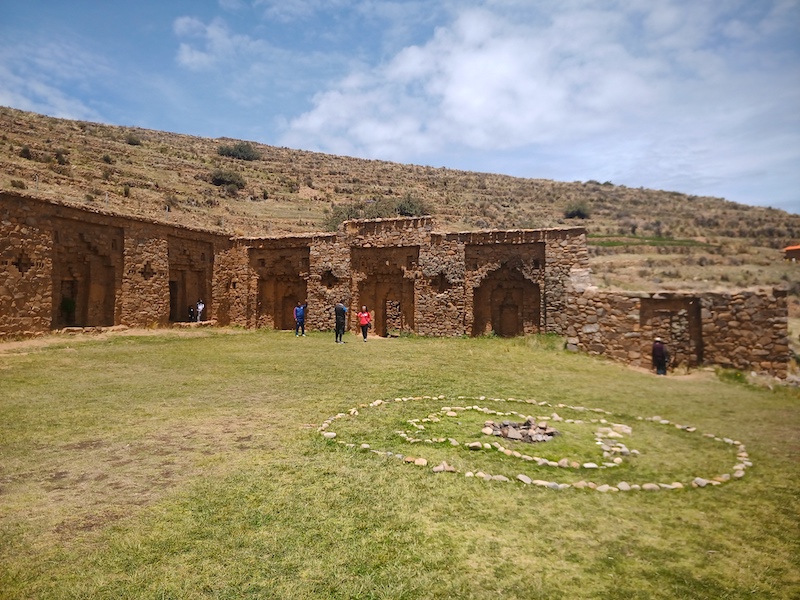
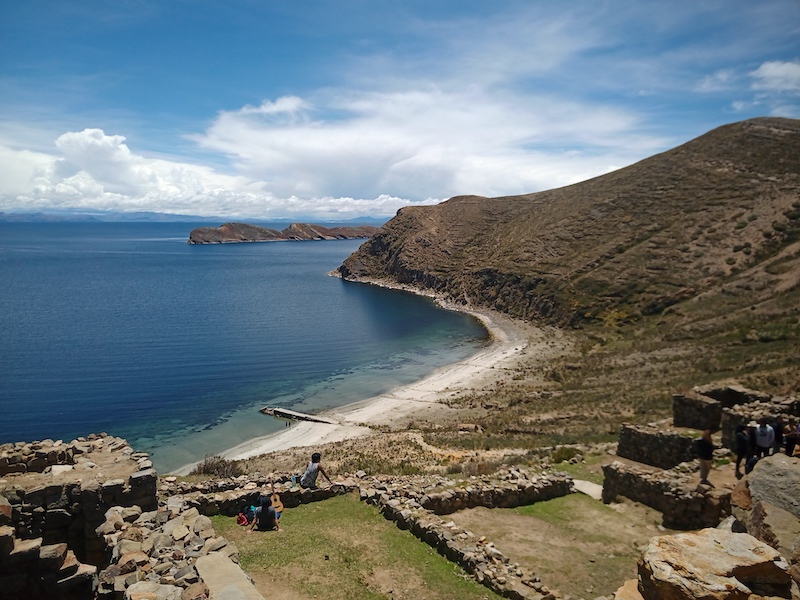
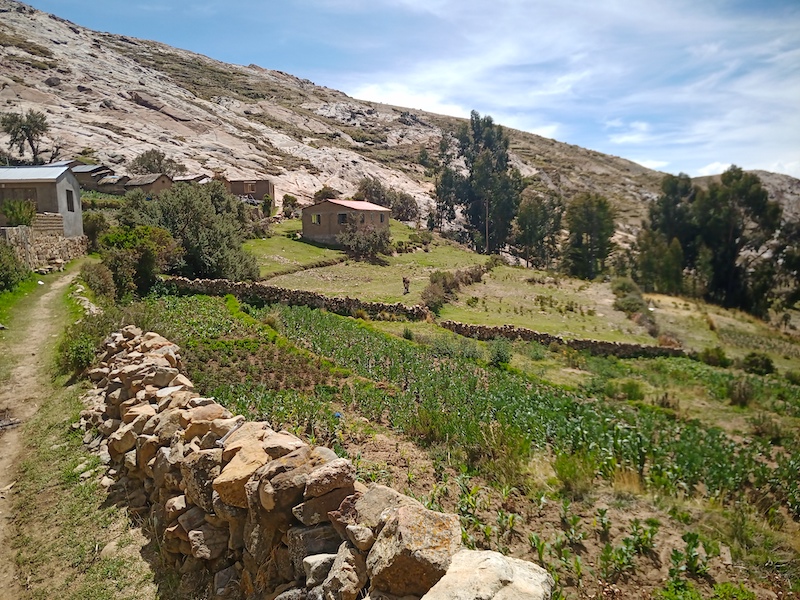

The boat dropped us off at the ruins on Isla del Sol, and we walked another 45 minutes south to the village of Challapampa, where we grabbed a room in a hotel overlooking a gorgeous bay.
Freddy, the hostal owner, is a gregarious, ever-smiling dude. He said the people of the village – about 400 in all – have a system to ensure everyone has a livelihood. Some families run restaurants, others (like his) have accommodation, and other shops or fishing boats.
Outsiders can own land in or around the village, but can’t start businesses so the cake is preserved for the locals.
He contrasted his situation with the relative free-for-all in the bigger village of Yumani on the island’s south end, where he said interlopers from La Paz and elsewhere in Bolivia have crowded in to set up hotels and other enterprises, pushing out the locals.
He also said there was no love lost between Challapampa and Yumani, largely because of their different set-ups.
Our original plan was to walk from Challapampa to Yumani (about three to four hours) and take a boat back to Copacabana, but when the day dawned grey and wet the walk no longer seemed such a good idea. Instead we jumped on the 8.30am boat and motored slowly back to Copa under leaden skies on a lake ruffled by wind chop.

The others in the group, who had gone to Isla del Sol a day ahead of us and actually done the walk to Yumani, returned to Copacabana a few hours later. I put the afternoon to good use with an oil change for the Yamaha out front of the hotel.
The border crossings at nearby Kasani and Desaguadero were still out of action, so we made plans to strike out next day for Chile with the aim to cross into Peru just north of Arica, where we knew the border was open.
Hoping to avoid La Paz and its tangled streets and traffic, Jamie plotted a dirt road detour that would take us around the city before rejoining the main road west to the border.
It was a good run with a river crossing and some muddy bits. Twice I lost a plastic soft drink bottle with some spare fuel inside from the bike. First time I retrieved it from a puddle after retracing my tracks for about a kilometre. Second time, as Baudoin related, it went “poof!” when it hit the ground. C’est la vie.
Our destination for the night was the little village of Sajama, nestled in a national park of the same name. The village is only a few kilometres from the Bolivia-Chile border and sits at a lofty 4000-odd metres in altitude.
The ride towards Sajama was spectacular as we climbed through the soaring altiplano landscapes of valleys, gorges, towering mountains, lakes and boulders, in a kaleidoscope of colours from grey and black to almost burgundy red.
We stopped at a chullpa – a mud brick repository for bones used by the ancients. No fanfare, no signs – the two chullpas were simply perched on a rise just off the main road, quiet as you like.
Chicken wire around one chullpa showed some effort at preserving the several-hundred-year-old structure, but empty plastic bottles and wrappers in the other told of neglect and disrespect. They were both full of old human bones.
The track into Sajama was a bit sandy, which kept me on my toes (literally) at the end of a long day.
Most of the town’s hostals were closed, but we found lodgings with a kindly old cholita who owned a small shop. I bunked with Jamie, Nynke and Lukas in a small rendered mud brick house with a thatched roof. The weather was freezing, but the thick walls meant even the little fan heater had the small room warm in a short time. Not so the shower – solo frio. I decided I could wait another day to bathe.
We ate quinoa soup and llama casserole with mashed potato and veggies for dinner, served in the shop by the cholita, while her husband watched some sort of Bolivian cultural program at full volume with his face just inches from the screen of an old CRT television.
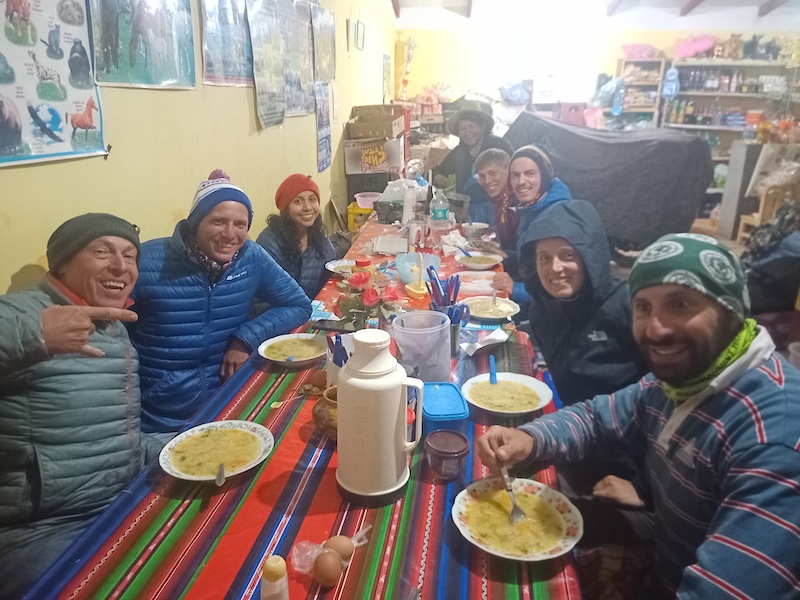

In the morning, we were greeted with the breathtaking sight of snow-topped mountains all around the village. They were hidden under cloud when we arrived, but now they seemed close enough to touch. One of the peaks was Sajama volcano itself – the highest mountain in Bolivia.

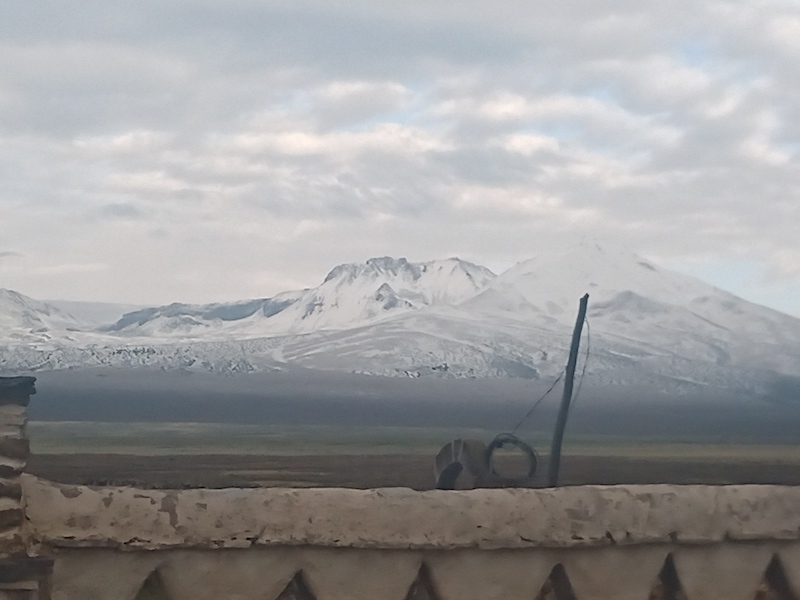
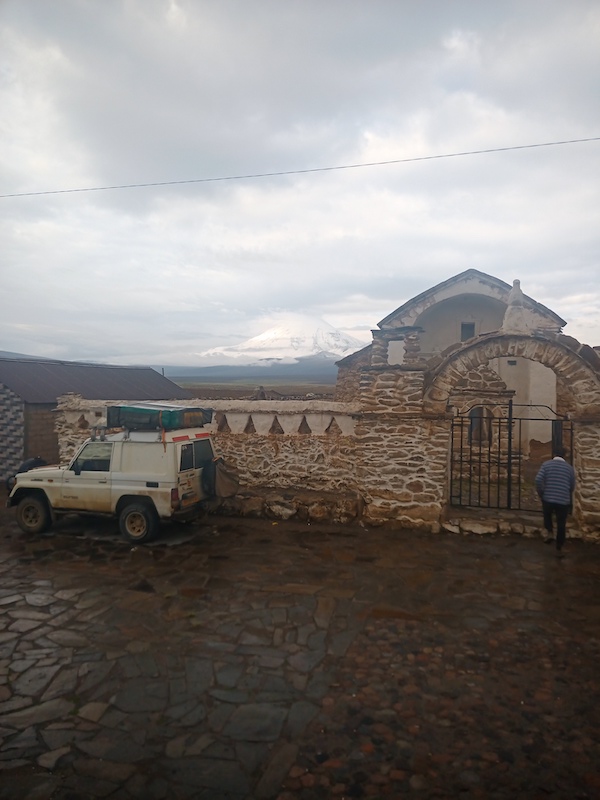

A diversion to the nearby geysers and hot springs was well worthwhile. Llamas grazed nearby as we wandered around the bubbling pools, steaming their heat into the frigid air. It is one of those places that, in another country, would be all fenced off and usually overrun with visitors, but here you could walk anywhere and there wasn’t another soul to be seen.
Geysers gazed, we headed out of the national park, back to the main road and on to the border. The weather closed in and for the last five kilometres to the frontier, I was wiping snow from my visor. Thank goodness the border post had a large undercover parking area, especially as it took us all close to two hours to get processed out of Bolivia and into Chile.
Back in Chile, we stayed high for a further 20 or 30km, the road skirting broad grey lakes and hills studded with rough grass, rocks and low shrubs.
Then the descent began. For the next 100 or so kilometres, we rode a rollercoaster along a good tar road hacked into the rocky mountains as we slipped off the altiplano, back to the high desert of Chile and then into a long green valley between enormous, looming sand mountains.
The coast appeared as we rode into Arica, Chile’s northernmost city and only a few kilometres from the Peru border.
From altiplano to beach, from snow to 27 degrees, in just a few hours.
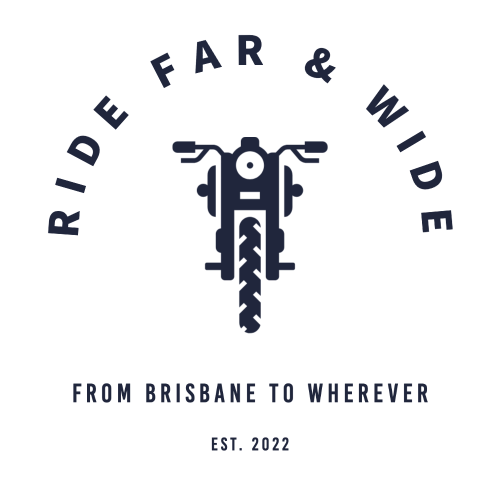
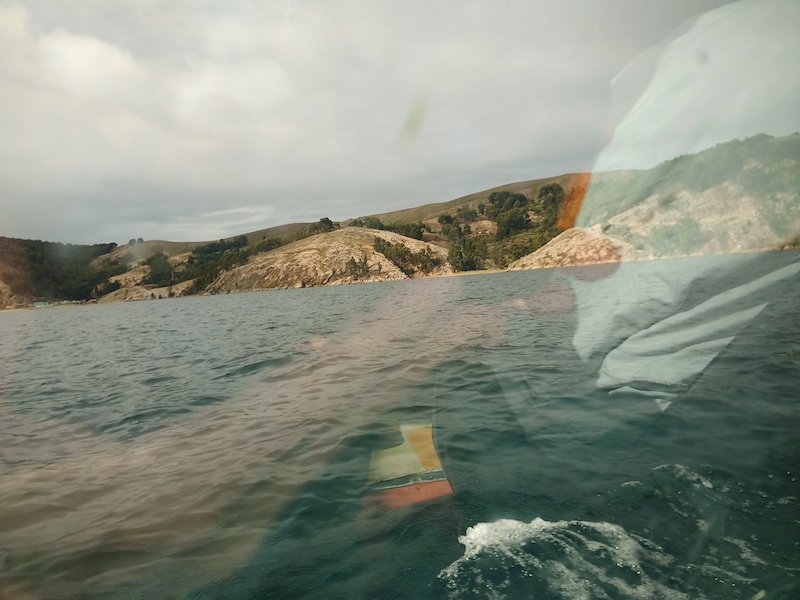
Comments
8 responses to “Going back to go forward”
Wow! Pete, what an amazing adventure you are having. How wonderful to explore and visit these places and to realise that even though our way of life may be very different, essentially we are all humans with the same emotions and connections to our fellow beings. It seems to me that almost everyone has been accommodating and helpful during your interactions with them (with the exception of the service station owners (boo!).
Continue to travel safely and entertain us with your stories. They brighten our days.
Thanks Mum.
I loved reading this, especially the way you describe the places, it’s people and the way of life. The photos really bring it to life I can almost imaging being there and am in awe of the journey you’re having.
And the weather extremes! Can’t help but hope you’re staying warm with those supplies you carefully put together in preparation for this adventure.
It really is enjoyable reading and following your journey with you. Thank you again for sharing 🙂
❤️❤️
Oh, almost forgot! Loooove the cheezy grin. Salud!
😂
Fabulous post Pete. Sounds like this is truly becoming an adventure of a lifetime. A very courageous trip indeed. Keep filling us in on your huge adventure. We love hearing every word.
❤️👍